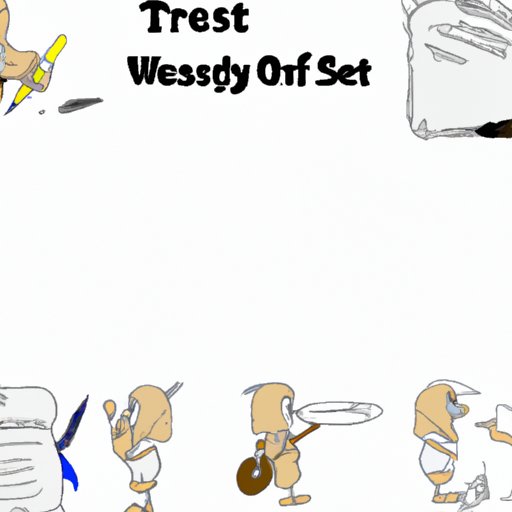Introduction
Writing is more than simply putting words on paper. It’s about creating something that is both entertaining and meaningful. One way to do this is through the use of description. Description is the act of describing something or someone in detail, usually with the aim of making it come alive in the reader’s mind.

Definition of Description in Writing
Description in writing is the art of conveying a scene, character, or setting through vivid language. It’s a way of painting a picture for the reader, allowing them to experience the story as if they were there. Good description uses sensory details and figurative language to give the reader a clear understanding of what is being described.

Overview of the Power of Description in Writing
The power of description in writing lies in its ability to bring a story to life. By using vivid language and carefully chosen details, a writer can evoke emotion and create a sense of atmosphere that will draw the reader into the story. Descriptive writing can also help to establish a strong connection between the characters and the setting.

Exploring the Power of Description in Writing
Crafting Descriptive Scenes in Fiction Writing
When crafting a scene in fiction writing, description plays an important role. It helps to set the tone and create a vivid image for the reader. When describing a scene, it’s important to focus on the details. For example, instead of just saying “it was a sunny day,” try to add more detail. Describe the warmth of the sun on your skin, the smell of the flowers, the sound of the birds chirping. These details will help to bring the scene to life and make it more engaging for the reader.
Making Description an Essential Part of Your Writing Style
Good writing should have a consistent style throughout. This means that description should be included in every scene and in every paragraph. By weaving descriptions into your prose, you can create a sense of flow and make your writing more captivating. When adding descriptions, focus on the five senses – sight, sound, smell, taste, and touch – to create a vivid image in the reader’s mind.
Using Description to Create a Sense of Mood and Atmosphere
Description can also be used to create a sense of mood and atmosphere. It can be used to evoke certain emotions in the reader, such as fear, sadness, joy, or suspense. To do this, you need to think about how the scene makes you feel and then try to convey those feelings through your writing. For example, if you want to create a feeling of suspense, you might describe a dark alleyway with shadows lurking around every corner.
Examples of How to Use Description to Enhance Your Writing
Example 1: Using Color to Describe a Scene
Color is one of the most effective ways to bring a scene to life. Colors can evoke certain emotions and create a certain atmosphere. For example, if you want to create a feeling of warmth and comfort, you might use shades of yellow and orange. If you want to create a feeling of dread and foreboding, you might use shades of gray and black.
Example 2: Describing a Character Through Action
Another way to use description is to describe a character’s actions. Rather than simply stating that a character is sad or angry, show their emotions through their body language and mannerisms. For example, if a character is angry, you might describe them clenching their fists, grinding their teeth, or pacing back and forth. This helps to bring the character to life and gives the reader a better understanding of them.
Example 3: Creating a Sense of Place Through Detail
Finally, you can use description to create a sense of place. This means focusing on the details of the environment, such as the sights, sounds, smells, and textures. For example, if you’re describing a forest, you might mention the sunlight filtering through the trees, the chirping of birds, the earthy smell of the soil, and the crunch of leaves underfoot. These kinds of details will help to transport the reader to the scene and make them feel like they’re actually there.
Conclusion
Description is an essential part of writing. It can be used to craft descriptive scenes and characters, create a sense of mood and atmosphere, and bring a story to life. By using vivid language and carefully chosen details, writers can evoke emotion and draw the reader into the story. Examples of how to use description effectively include using color to describe a scene, describing a character through action, and creating a sense of place through detail. With practice, anyone can learn to use description to enhance their writing and make it more captivating.
(Note: Is this article not meeting your expectations? Do you have knowledge or insights to share? Unlock new opportunities and expand your reach by joining our authors team. Click Registration to join us and share your expertise with our readers.)
